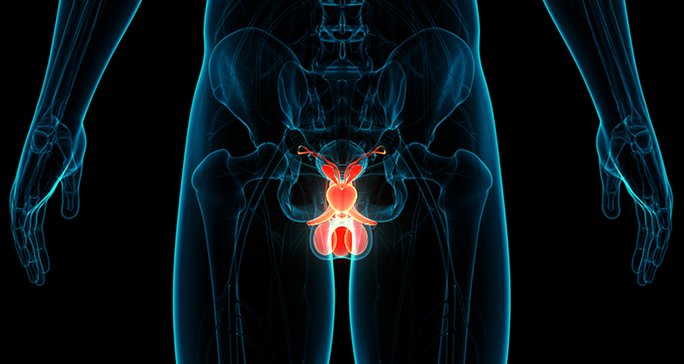- Diseases
- Acoustic Neuroma (14)
- Adrenal Gland Tumor (24)
- Anal Cancer (66)
- Anemia (2)
- Appendix Cancer (16)
- Bile Duct Cancer (28)
- Bladder Cancer (68)
- Brain Metastases (28)
- Brain Tumor (228)
- Breast Cancer (712)
- Breast Implant-Associated Anaplastic Large Cell Lymphoma (2)
- Cancer of Unknown Primary (4)
- Carcinoid Tumor (8)
- Cervical Cancer (154)
- Colon Cancer (164)
- Colorectal Cancer (110)
- Endocrine Tumor (4)
- Esophageal Cancer (42)
- Eye Cancer (36)
- Fallopian Tube Cancer (6)
- Germ Cell Tumor (4)
- Gestational Trophoblastic Disease (2)
- Head and Neck Cancer (6)
- Kidney Cancer (124)
- Leukemia (344)
- Liver Cancer (50)
- Lung Cancer (288)
- Lymphoma (284)
- Mesothelioma (14)
- Metastasis (30)
- Multiple Myeloma (98)
- Myelodysplastic Syndrome (60)
- Myeloproliferative Neoplasm (4)
- Neuroendocrine Tumors (16)
- Oral Cancer (98)
- Ovarian Cancer (172)
- Pancreatic Cancer (166)
- Parathyroid Disease (2)
- Penile Cancer (14)
- Pituitary Tumor (6)
- Prostate Cancer (144)
- Rectal Cancer (58)
- Renal Medullary Carcinoma (6)
- Salivary Gland Cancer (14)
- Sarcoma (234)
- Skin Cancer (294)
- Skull Base Tumors (56)
- Spinal Tumor (12)
- Stomach Cancer (60)
- Testicular Cancer (28)
- Throat Cancer (90)
- Thymoma (6)
- Thyroid Cancer (98)
- Tonsil Cancer (30)
- Uterine Cancer (78)
- Vaginal Cancer (14)
- Vulvar Cancer (18)
- Cancer Topic
- Adolescent and Young Adult Cancer Issues (20)
- Advance Care Planning (10)
- Biostatistics (2)
- Blood Donation (18)
- Bone Health (8)
- COVID-19 (362)
- Cancer Recurrence (120)
- Childhood Cancer Issues (120)
- Clinical Trials (622)
- Complementary Integrative Medicine (22)
- Cytogenetics (2)
- DNA Methylation (4)
- Diagnosis (224)
- Epigenetics (6)
- Fertility (62)
- Follow-up Guidelines (2)
- Health Disparities (14)
- Hereditary Cancer Syndromes (122)
- Immunology (18)
- Li-Fraumeni Syndrome (8)
- Mental Health (116)
- Molecular Diagnostics (8)
- Pain Management (64)
- Palliative Care (8)
- Pathology (10)
- Physical Therapy (18)
- Pregnancy (18)
- Prevention (882)
- Research (384)
- Second Opinion (74)
- Sexuality (16)
- Side Effects (596)
- Sleep Disorders (10)
- Stem Cell Transplantation Cellular Therapy (216)
- Support (404)
- Survivorship (324)
- Symptoms (182)
- Treatment (1764)
7 pain management options for cancer patients you might not know about
5 minute read | Published March 05, 2024
Medically Reviewed | Last reviewed by an MD Anderson Cancer Center medical professional on March 05, 2024
When it comes to treating cancer pain, there isn’t a one-size-fits-all approach. Patient preference, allergies and potential drug interactions with other therapies all impact which approach your doctor recommends.
A lot of patients assume opioids are the only option, but there are many ways to help manage pain and increase quality of life.
Here are seven pain management options you may not be aware of, from least invasive to most invasive.
1. Anti-inflammatory drugs
When a tumor invades bones, nerves or organs, it can cause inflammation, which can be painful. Taking a non-steroidal anti-inflammatory drug like Celebrex or meloxicam can offer relief. Ibuprofen and acetaminophen can help treat less severe pain and are available over the counter.
Although these drugs can help control inflammation, they may also affect platelet function and may mask fever, so they may not be recommended for patients on chemotherapy, immunotherapy or certain clinical trials. That’s because patients on these treatments are more susceptible to infection or bleeding if platelet counts drop.
Pain management is part of a multidisciplinary approach to cancer care. I routinely work with a patient’s oncologist before recommending a new pain treatment to ensure there aren’t concerns about negative reactions.
2. Muscle relaxers
Sometimes cancer treatment causes pain. For example, patients who’ve had radiation therapy may develop scar tissue near the treatment site, which can cause muscle tightness. Muscle relaxers can help relieve that tightness.
Patients may also have pain that has nothing to do with their cancer treatment, like pre-existing back pain or muscle spasms. Muscle relaxers can offer relief in those cases as well.
We want to make you as comfortable as possible when you’re going through treatment, so it’s important to tell your care team about any pain you’re experiencing.
3. Scrambler therapy
Scrambler therapy is a non-invasive treatment often used in patients with neuropathy. When patients feel pain, the sensation is translated into different signals that are sent to the brain. Scrambler therapy places little EKG electrodes in the areas where patients have neuropathy, typically the hands and feet. These are meant to block pain signals and replace them with non-pain signals, thus scrambling information the injured nerves send to the brain. That’s how we’re able to reduce the amount of pain sensation patients feel.
Treatments are typically done for about 45 minutes to one hour Monday through Friday. We’ve seen good results with it, not only with improvement in patients’ neuropathy but also in the ability to lessen some patients’ medications. In some cases, patients have been able to stop taking their medications for neuropathy altogether.
4. Steroid injections
Steroids like triamcinolone and dexamethasone mimic your body’s natural response to inflammation and can help ease more severe joint pain from arthritis or pain from herniated discs or spinal cord compression. During this treatment, steroids are injected directly into the problem area with the help of an X-ray to precisely target the pain. They typically offer two to three months of relief.
Like non-steroidal anti-inflammatory drugs, steroids can mask fever or suppress the immune system. So, in some cases, they may not be recommended for patients on immunotherapy or clinical trials.
Because steroids can also cause an increase in blood sugar, patients with diabetes should talk with their endocrinologist to control blood glucose.
5. Neurolytic procedures
Patients with cancer in the abdomen or with carcinomatosis (which is when cancer has spread widely throughout the body) may have severe pain caused by tumors pressing on the spine or organs. In those cases, a neurolytic procedure may help. With this method, alcohol is injected around the nerves that are causing pain. The alcohol burns off the nerves and prevents them from sending pain signals to the brain.
A nerve block is a similar method that involves injecting a mixture of local anesthetic and steroids close to the nerves that are causing pain.
The pain will likely return when the nerves grow back, but that usually takes two to three months.
6. Intrathecal drug delivery
If oral medication or steroid injections aren’t enough, intrathecal drug delivery may help. This approach delivers medicine such as morphine through a catheter inserted directly into your spinal fluid.
To determine if implanted intrathecal drug delivery is right for you, your doctor will inject a single shot of medicine into your spinal fluid. If your pain is relieved by 50% or more over five to seven days, you may be fitted with the pump.
If you do have the pump implanted, it will need to be refilled with medication every few months.
7. Spinal cord stimulation
Spinal cord stimulation may help patients with extreme nerve pain like burning, stabbing, or tingling that isn’t relieved by medication.
Similar to a pacemaker, spinal cord stimulation uses an implanted battery-operated device to deliver mild electrical signals to the spine. The electrical signals modify peripheral input from painful areas, which masks pain signals before they can reach the brain.
Patients undergo a five-to-seven-day trial before the spinal cord stimulator is implanted. During the trial period, electric wires are placed into the dorsal column of the spinal cord or dorsal root ganglion through a small incision in your skin. The wires are attached to an external battery pack that can be worn on a belt. The goal is for you to feel like your pain has been reduced by at least 50% before the stimulator is implanted.
While this therapy won’t eliminate all pain, it can drastically reduce and change your perception of pain and improve your quality of life.
Patients who don’t want to commit to a permanently planted device can try peripheral nerve stimulation. This is when stimulating electrodes are implanted near nerves outside of the spinal cord, directly targeting areas where the patient is feeling pain. The stimulating electrodes are in place temporarily for 60 days. For some patients, pain relief lasts beyond 60 days.
There are a lot of options for managing pain, but the right treatment depends on your pain and your treatment plan. That’s why it’s important to talk with your care team, so they can find the approach that’s best for you.
Uzondu Osuagwu, M.D., is a pain medicine specialist at MD Anderson.
Request an appointment at MD Anderson online or call 1-855-634-5603.
Related Cancerwise Stories

We want to make you as comfortable as possible when you’re going through treatment.
Uzondu Osuagwu, M.D.





